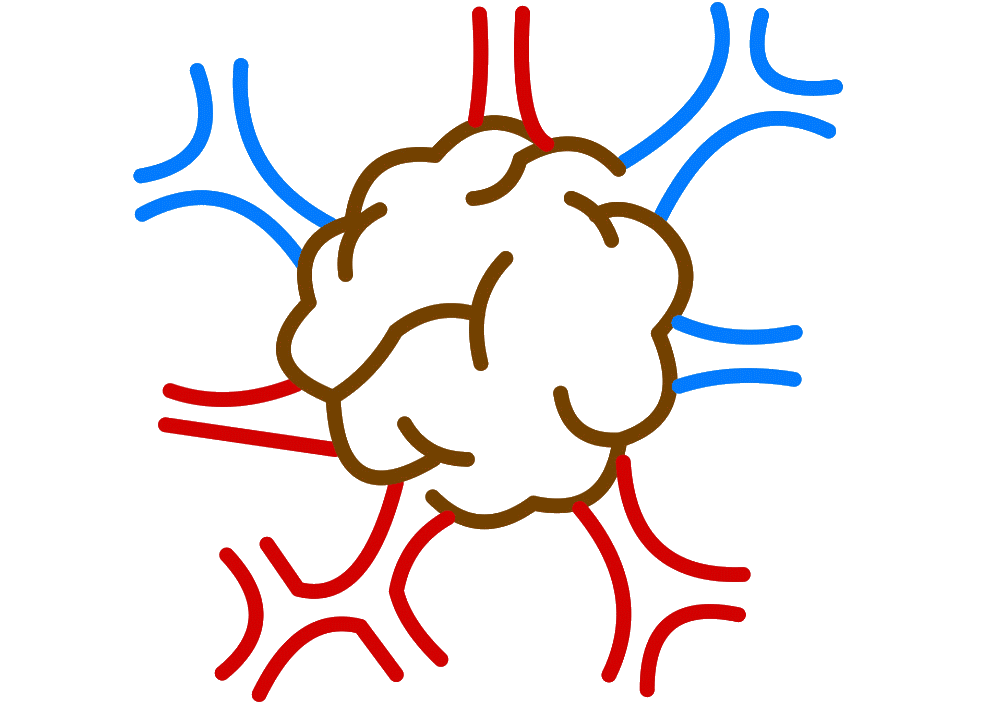Our Vision?
To revolutionise medical diagnostics by putting the power of current US$3.5 million MRI machines into a simple scanner.
Every third person will in their lifetime be diagnosed with cancer. Today, 1.3% of the world’s population, roughly 100 million people, has cancer and this number is set to grow in the coming years. In the UK, almost half of all cancer patients are currently being diagnosed too late fating 100’000 cancer patients to die because there is too little capacity to diagnose them all properly. This is unacceptable and highlights why we need optoacoustic imaging in hospitals right now!
A state-of-the-art imaging device like an MRI scanner costs US$3.5 million, requires a specially designed room, trained technicians and sophisticated maintenance, thus putting this vital technology out of range of most hospitals, let alone doctors‘ cabinets. For example, in West Africa less than 100 MRI scanners serve 400 million people. Radiography, such as Computational Tomography (CT), uses ionizing radiation, increasing the risk of the patient getting cancer as a consequence.
Optoacoustic imaging technologies are comparatively inexpensive, far less risky for patients and combine the user friendliness of ultrasound technology with laser precision imaging.
We want to enable opto-acoustical scanners to provide live, detailed, instantaneous three-dimensional images resulting in shorter wait times, lower costs and a more sustainable method of medical diagnostics. To do this we are developing highly specialised, activatable nanoparticles to target breast cancer.
We believe that the future of medical diagnostics lies in optoacoustic imaging, and we want to bring that future to you!
About our Project
With the help of the Razansky lab specialized in optoacoustic imaging and the Herrmann lab focused on nanoparticles, we are trying to develop a gold-coated nanoparticle that will target tumors. The nanoparticle will be activatable, which means that under certain circumstances (in this instance, if it finds itself in a tumor) the nanoparticles could be able to retain more heat, emit more sound or another property that can be used to enhance the imaging. This will drastically improve the contrast of tumor from the rest of the body and therefore help localize and quantify the unwanted tumor. The advantage of using a gold-coated nanoparticle is that it enables us to deliver small doses of medication directly to the cancer without it being toxic to the body. However, we won’t focus on the medication for the near future.
Optoacoustic Imaging
 Optoacoustic imaging is a new biomedical imaging technology that allows high resolution imaging at depths of several centimeters in living tissues. We can decompose this method in 4 steps. Firstly, with a pulsed laser (smaller than 10ns pulse duration), light is sent to the sample. Secondly, the tissue will absorb the light and transform it into heat. Some tissues will create more heat than others which will help us differenciate the different types of tissues. Thirdly, this heat will induce a local expansion of the tissue. Lastly, this dilatation will emit sound waves which will be detected by ultrasound transducers. The advantage of optoacoustic imaging is that we don't depend on the photon scattering, enabling high resolution.
Optoacoustic imaging is a new biomedical imaging technology that allows high resolution imaging at depths of several centimeters in living tissues. We can decompose this method in 4 steps. Firstly, with a pulsed laser (smaller than 10ns pulse duration), light is sent to the sample. Secondly, the tissue will absorb the light and transform it into heat. Some tissues will create more heat than others which will help us differenciate the different types of tissues. Thirdly, this heat will induce a local expansion of the tissue. Lastly, this dilatation will emit sound waves which will be detected by ultrasound transducers. The advantage of optoacoustic imaging is that we don't depend on the photon scattering, enabling high resolution.
Nanoparticles
 Nanoparticle contrast agents are small substances, which can be used to enhance the visibility of tissues, structures, substances, or pathology when doing optoaccoustical imaging, often by accentuating the differences between two substances or tissue types (ie, where tumor ends and normal tissue begins; where blood flow is increased or decreased; etc).
Nanoparticle contrast agents are small substances, which can be used to enhance the visibility of tissues, structures, substances, or pathology when doing optoaccoustical imaging, often by accentuating the differences between two substances or tissue types (ie, where tumor ends and normal tissue begins; where blood flow is increased or decreased; etc).
Breast Cancer
 One in eight women will get breast cancer in her lifetime. Today, breast cancer is detected with mammograms, but each mammogram increases the risk of cancer through ionized radiation, which is why many women are reluctant to test themselves regularly. With optoacoustic imaging, annual screening for breast cancer could be done more effectively and efficiently because it is less expensive, less time consuming and its non-ionizing radiation isn’t harmful for the patient allowing more women to be diagnosed early and receive proper and timely treatment.
One in eight women will get breast cancer in her lifetime. Today, breast cancer is detected with mammograms, but each mammogram increases the risk of cancer through ionized radiation, which is why many women are reluctant to test themselves regularly. With optoacoustic imaging, annual screening for breast cancer could be done more effectively and efficiently because it is less expensive, less time consuming and its non-ionizing radiation isn’t harmful for the patient allowing more women to be diagnosed early and receive proper and timely treatment.
Further explanation
If you are interested and want to learn more, we have assembled some articles and websites that can further explain and help you understand this project:
Targeted contrast agents and activatable probes for photoacoustic imaging of cancer 2022